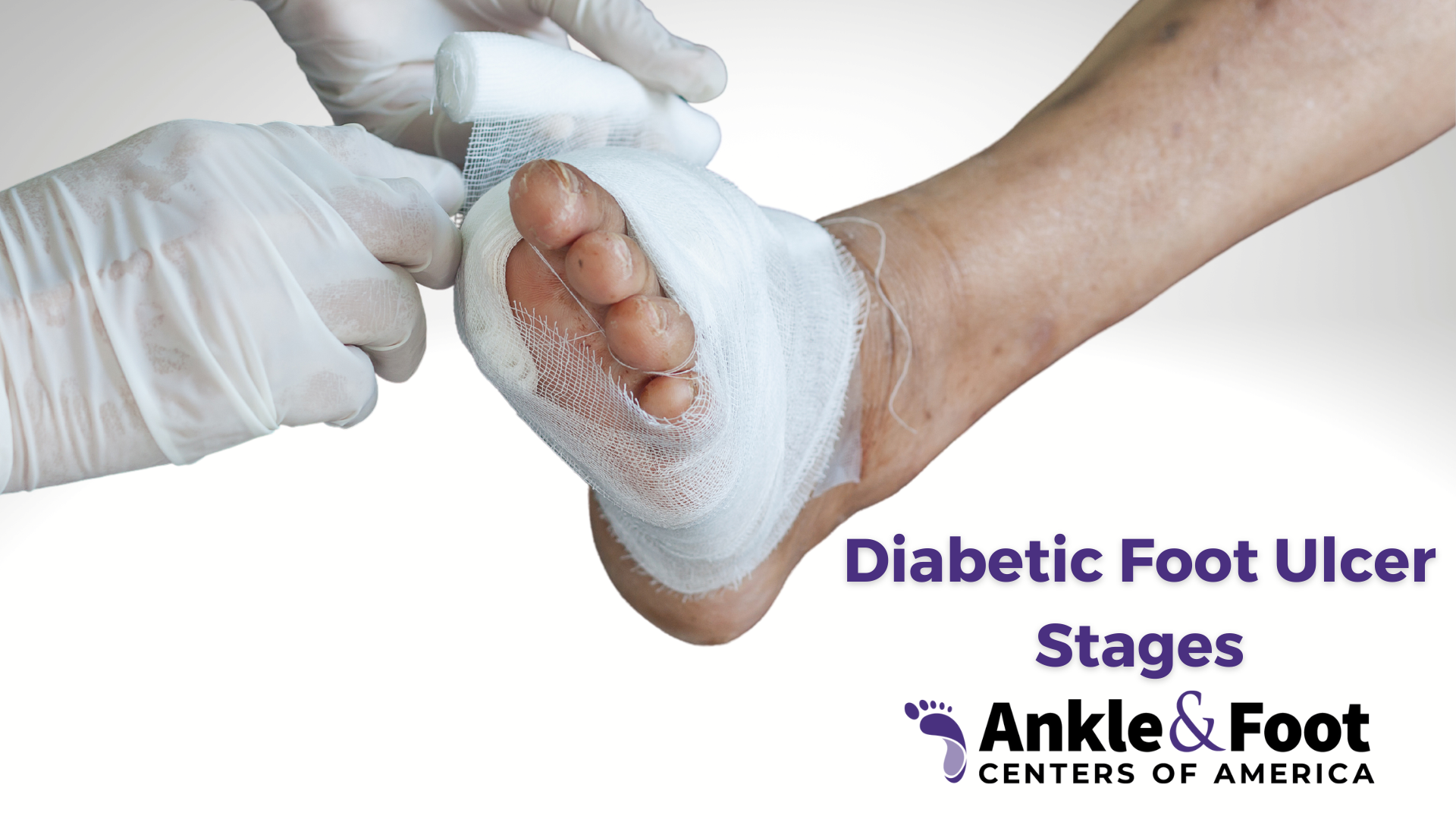Diabetes is a complex condition with numerous potential complications, one of the most common being diabetic foot ulcers. These wounds, which occur due to nerve damage and poor circulation associated with diabetes, can lead to severe consequences if not treated appropriately. This article aims to provide a comprehensive understanding of diabetic foot ulcers, their symptoms, preventative measures, and effective treatment strategies. By spreading awareness and knowledge about this common diabetic complication, we hope to empower patients and their caregivers to manage the condition proactively, thus minimizing risks and enhancing quality of life. Let’s begin our exploration into the world of diabetic foot ulcers, a challenge that, with the right care, can be effectively addressed.
Understanding Diabetic Foot Ulcers
Before delving into the specifics of treatment and management, it’s essential to understand what diabetic foot ulcers are and who they affect.
What is a Diabetic Foot Ulcer?
A diabetic foot ulcer is an open sore or wound that most commonly occurs on the bottom of the foot in approximately 15% of patients with diabetes. It is one of the major complications of diabetes mellitus, often resulting from a combination of neuropathy (nerve damage) and peripheral vascular disease. Diabetic foot ulcers can occur anywhere on the foot, but they are most common on weight-bearing areas like the ball, heel, and side of the foot. If left untreated, these ulcers can lead to serious infections and, in severe cases, necessitate amputation.
Who is at Risk?
 Individuals with type 1 and type 2 diabetes are at risk for foot ulcers. The longer a person has diabetes, particularly if blood glucose is not well controlled, the higher the risk. Factors such as poor circulation, nerve damage, changes in the shape of the feet, and trauma or injury to the foot increase the likelihood of ulcers. Other risk factors include a history of foot ulcers, heart disease, kidney disease, and obesity. It’s important to note that preventive foot care can significantly reduce the risk of ulcers and amputation.
Individuals with type 1 and type 2 diabetes are at risk for foot ulcers. The longer a person has diabetes, particularly if blood glucose is not well controlled, the higher the risk. Factors such as poor circulation, nerve damage, changes in the shape of the feet, and trauma or injury to the foot increase the likelihood of ulcers. Other risk factors include a history of foot ulcers, heart disease, kidney disease, and obesity. It’s important to note that preventive foot care can significantly reduce the risk of ulcers and amputation.
Symptoms and Early Signs of Diabetic Foot Ulcers
Recognizing the symptoms and early signs of diabetic foot ulcers is crucial for timely intervention and treatment.
Recognizing Diabetic Foot Ulcer Symptoms
Symptoms of a diabetic foot ulcer may not always be apparent, due to nerve damage. However, common signs include:
- Redness, swelling or warmth around the wound
- Foul-smelling discharge seeping from the wound
- Pain or firmness around the wound
- Non-healing sores on the foot
- Discoloration of the foot or leg
It’s crucial to monitor for these symptoms and seek medical attention promptly to prevent the ulcer from worsening.
Early Signs and Prevention
 Early detection can often prevent diabetic foot ulcers from developing. Signs to watch for include:
Early detection can often prevent diabetic foot ulcers from developing. Signs to watch for include:
- Skin color changes
- Temperature variation in the foot
- Swelling in the foot or ankle
- Persistent pain
- Tingling sensation or numbness
- Calluses or corns developing on the foot
Preventive measures include daily foot inspection, regular foot care, wearing appropriate footwear, controlling blood sugar levels, and regular check-ups with your Nashville Wound Care Specialist.
Stages of Diabetic Foot Ulcers
Diabetic foot ulcers progress through various stages, understanding which can be crucial for appropriate treatment. The stages are typically defined as:
- Stage 1: The skin is intact but exhibits signs of potential ulcer formation, such as discoloration, warmth, or induration (hardness).
- Stage 2: The ulcer extends through the dermis, reaching the capillaries, which can cause infection and edema.
- Stage 3: The ulcer extends through the subcutaneous tissue, potentially involving tendon, bone, or joint.
- Stage 4: Gangrene of the forefoot, caused by critical ischemia, often necessitates amputation of part of the foot.
- Stage 5: Extensive gangrene of the foot that typically requires a higher level of amputation, such as midfoot or higher.
Each stage requires different interventions, so timely diagnosis and treatment are essential.
Comprehensive Guide to Diabetic Foot Ulcer Treatment
When it comes to treating diabetic foot ulcers, there’s a wide array of options available, ranging from professional medical interventions to home-based remedies.
Professional Treatments
Upon the onset of a diabetic foot ulcer, professional medical treatment becomes crucial. Depending on the stage and severity of the ulcer, different treatments may be recommended.
- Wound Debridement: This is the process of removing dead tissue and foreign objects from the wound to promote healing. It can be done surgically, mechanically, or chemically.
- Antibiotics: If there is an infection present, antibiotics will likely be prescribed.
- Pressure Offloading: This involves taking pressure off the ulcer area to allow it to heal. Special shoes, casts, and foot braces can be used for this.
- Wound Dressing: A proper wound dressing helps to protect the wound and create a moist healing environment.
- Hyperbaric Oxygen Therapy: In some severe cases, this treatment, which involves inhaling pure oxygen in a pressurized chamber, may be used.
Wound Dressing and Pain Management
Proper wound dressing is an essential part of diabetic foot ulcer treatment. It helps to keep the wound clean, maintain a moist environment, and protect the area from further injury. Dressings can be simple or advanced, including films, foams, gels, and antimicrobial dressings.
Pain management is equally important, as diabetic foot ulcers can be quite painful. Topical analgesics, nonsteroidal anti-inflammatory drugs (NSAIDs), and, in some cases, opioids may be used to manage pain.
Home Remedies for Diabetic Foot Ulcers
In addition to professional treatments, certain home remedies and lifestyle modifications can assist in the healing process and prevent complications.
- Blood Sugar Management: Keeping blood glucose levels under control can speed up the healing of foot ulcers and prevent further complications.
- Proper Foot Care: This involves daily cleaning and inspection of the foot, keeping it dry and clean, and using a moisturizer to prevent dryness.
- Healthy Diet and Exercise: A balanced diet and regular physical activity can improve overall health and help manage diabetes more effectively.
Natural Treatments for Foot Ulcers
 Some people find relief with natural treatments like honey or aloe vera, which have antimicrobial and wound-healing properties. However, it’s important to consult a wound doctor before trying these remedies to ensure they won’t interfere with other treatments or cause unwanted side effects.
Some people find relief with natural treatments like honey or aloe vera, which have antimicrobial and wound-healing properties. However, it’s important to consult a wound doctor before trying these remedies to ensure they won’t interfere with other treatments or cause unwanted side effects.
Coping and Living with Diabetic Foot Ulcers
Diabetic foot ulcers can significantly impact a person’s quality of life. However, with proper management, individuals can continue to lead fulfilling lives while preventing ulcer recurrence.
Diabetic Foot Care Tips
Daily foot care is vital to the healing and prevention of diabetic foot ulcers. Here are some crucial steps:
- Inspect Your Feet Daily: Look for cuts, blisters, redness, swelling, or nail problems. Use a magnifying mirror to check the bottom of your feet.
- Clean Your Feet: Wash your feet daily in lukewarm water with a mild soap. Avoid soaking them as this can dry out the skin and promote infection.
- Moisturize Your Feet: Use a good moisturizer to keep the skin of your feet soft and prevent cracking. However, avoid moisturizing between your toes as this can promote fungal growth.
- Cut Nails Carefully: Cut nails straight across and file the edges. Avoid cutting nails too short, as this can lead to ingrown toenails.
- Wear Proper Footwear: Always wear footwear to protect your feet from injuries. Make sure the footwear fits well and provides good support.
- Control Your Blood Sugar: Regular monitoring and controlling of blood sugar can prevent nerve damage and promote wound healing.
Conclusion
Navigating the journey of diabetic foot ulcer treatment requires knowledge, patience, and diligence. Understanding the nature of these ulcers, recognizing their symptoms, and being proactive about treatment can significantly reduce the risk of complications and improve the quality of life for those living with diabetes. Remember, early detection and treatment, combined with comprehensive self-care practices and regular consultations with your ankle and foot doctor, are key to successfully managing diabetic foot ulcers.




